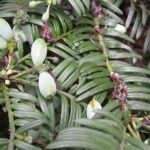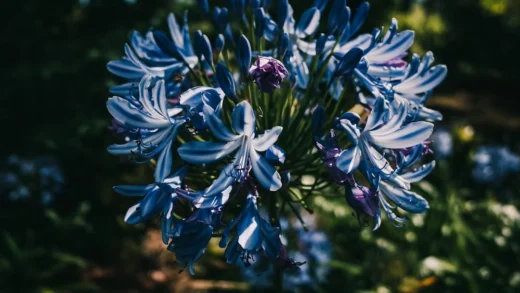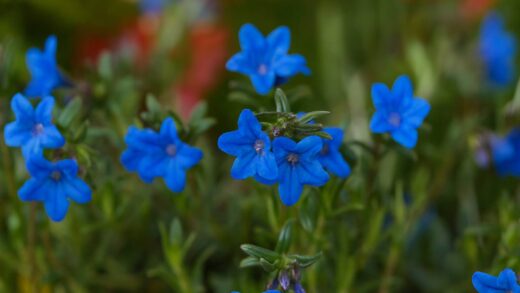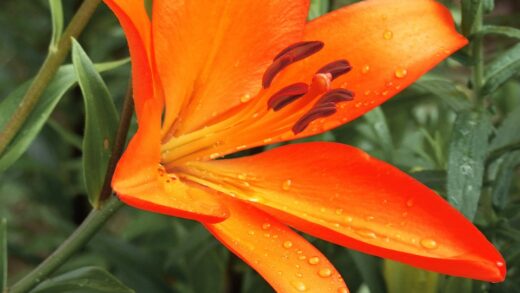The process of planting and propagating dahlias is a foundational skill for any gardener wishing to cultivate these magnificent blooms. It begins with the selection of healthy, viable tubers, which are the key to a successful growing season. Unlike plants grown from seed, dahlia tubers are clones of the parent plant, ensuring that the resulting flowers will be true to type. Successful planting involves careful timing, proper soil preparation, and precise placement of the tubers to give them the best possible start. From a single tuber, a large, bushy plant laden with dozens of flowers can emerge, making the initial effort of planting incredibly rewarding.
The ideal time to plant dahlia tubers is in the spring, after all danger of frost has passed and the soil has had a chance to warm up to at least 15°C (60°F). Planting too early in cold, wet soil can lead to the tubers rotting before they have a chance to sprout. A good rule of thumb is to plant them around the same time you would plant tomatoes in your area. Before planting, it is crucial to inspect your tubers for any signs of rot or disease. A healthy dahlia tuber should feel firm, similar to a potato, and have at least one visible ‘eye’ or sprout, which is where the new growth will emerge.
When preparing for planting, dig a hole that is approximately four to six inches deep and wide enough to accommodate the tuber or clump of tubers. If you are planting multiple dahlias, ensure they are spaced appropriately to allow for their mature size. Taller, larger-flowering varieties may require spacing of up to three feet apart, while smaller, bedding types can be planted closer together, around one to two feet apart. Incorporating a small amount of bone meal or a low-nitrogen fertilizer into the bottom of the planting hole can provide a beneficial boost for root development, but avoid placing high-nitrogen fertilizers in direct contact with the tuber.
When placing the tuber in the hole, position it horizontally with the eye or sprout pointing upwards. This orientation encourages the shoots to grow directly towards the soil surface. If you are unable to identify a specific eye, don’t worry too much; as long as the tuber is planted at the correct depth, the shoots will find their way to the light. After positioning the tuber, backfill the hole with soil, gently firming it down. It is critically important not to water the tubers immediately after planting unless the soil is exceptionally dry. The tuber contains enough moisture to initiate growth, and watering too early can promote rot.
Tuber division
Tuber division is the most common and reliable method of propagating dahlias, allowing you to increase your stock of a favorite variety and ensure the long-term health of your plants. Over the course of a growing season, a single dahlia tuber will multiply, developing into a large clump of interconnected tubers. If this entire clump is replanted year after year without being divided, it can result in an overcrowded plant with numerous weak stems and smaller, less impressive blooms. Dividing the clump every year or two reinvigorates the plant and produces more vigorous, productive specimens.
More articles on this topic
The best time to divide dahlia tubers is in the spring, just before planting. While it is possible to divide them in the autumn after lifting, spring division has the advantage that the ‘eyes’, or growing points, are often swollen and much easier to see. These eyes are small, reddish or purplish bumps located on the crown of the tuber, which is the part that was attached to the previous year’s stalk. It is absolutely essential that each individual tuber division has at least one eye attached to it, as a tuber without an eye will not sprout.
To begin the division process, you will need a clean, sharp knife or a pair of secateurs. Start by carefully examining the clump to identify the old central stalk and the location of the eyes on the crown. It can sometimes be helpful to lightly moisten the crown to make the eyes more prominent. Once you have identified a viable section—a single tuber with a piece of the crown and at least one eye—make a clean cut through the tough crown tissue to separate it from the main clump. The goal is to create several smaller divisions from the one large clump.
After dividing the tubers, inspect each piece carefully. Discard any tubers that are soft, shriveled, or show any signs of rot or disease. You should also trim away any of the fine, hair-like feeder roots and the old, woody ‘mother’ tuber from the previous season if it is still attached. The resulting divisions are now ready for planting. This process not only multiplies your dahlia collection for free but also provides an opportunity to share your favorite varieties with fellow gardeners, spreading the joy that these incredible flowers bring.
Propagation from cuttings
Propagating dahlias from cuttings is another excellent method for increasing your stock, and it is the preferred technique for many commercial growers. This method involves taking vegetative cuttings from a sprouted dahlia tuber early in the season, which are then rooted to create new plants. The primary advantage of taking cuttings is that a single tuber can produce a large number of new plants, often ten or more, over the course of a few weeks. These new plants will be genetically identical to the parent tuber, ensuring consistency in flower form and color.
More articles on this topic
To start the process, you will need to encourage your stored tubers to sprout a few weeks earlier than you normally would for planting. About six to eight weeks before the last frost date, place the tubers in a shallow tray or pot filled with a light, moist potting mix or compost. The crown of the tuber, where the eyes are located, should be just at or slightly above the soil surface. Place the tray in a warm, bright location, such as a greenhouse or a sunny windowsill, and keep the compost consistently moist but not waterlogged to encourage the eyes to sprout.
Once the new shoots have grown to about three to four inches in height and have at least two to three sets of leaves, they are ready to be taken as cuttings. Using a clean, sharp knife or scalpel, carefully cut a shoot from the crown of the tuber. It is important to take a small sliver of the crown tissue along with the base of the cutting, as this area is rich in rooting hormones and will improve your success rate. This type of cutting is known as a basal cutting. After taking the cutting, remove the lowest pair of leaves to expose a leaf node.
Immediately after taking the cutting, dip the base into a rooting hormone powder to further encourage root development. Then, insert the cutting into a small pot or cell tray filled with a sterile, free-draining rooting medium, such as a mix of perlite and compost. Water the cuttings gently and place them in a propagator or cover them with a plastic bag to create a humid environment, which reduces water loss from the leaves while the roots are forming. Place the cuttings in a bright, warm location out of direct sunlight. Roots should begin to form within two to three weeks, after which the new plants can be gradually acclimatized to outdoor conditions before being planted in the garden.
Growing from seed
Growing dahlias from seed is an exciting and unpredictable adventure, offering a completely different experience from growing them via tubers or cuttings. While tubers and cuttings produce clones of the parent plant, dahlias grown from seed exhibit genetic variability. This means that the resulting plants will not be identical to the parent and will display a wide range of colors, forms, and sizes. This variability is what makes growing from seed so thrilling for plant breeders and hobbyists alike, as it presents the possibility of discovering a completely new and unique dahlia variety.
Dahlia seeds should be sown indoors approximately six to eight weeks before the last expected frost date in your area. Use a seed tray or small pots filled with a high-quality, sterile seed-starting mix. Sow the seeds on the surface of the compost and lightly cover them with a thin layer of the mix or vermiculite. Moisten the compost gently using a spray bottle to avoid dislodging the seeds. To encourage germination, place the tray in a warm location or use a heated propagator, maintaining a consistent temperature of around 20-22°C (68-72°F).
Germination can be expected within five to fourteen days. During this time, it is important to keep the compost consistently moist but not waterlogged. Once the seedlings have germinated, move them to a location with plenty of bright, indirect light, such as a south-facing windowsill or under grow lights. This will prevent the seedlings from becoming ‘leggy’ or stretched as they reach for the light. Ensure good air circulation around the seedlings to help prevent damping-off disease, a fungal issue that can cause young seedlings to collapse at the soil line.
Once the seedlings have developed their first set of true leaves (the second pair of leaves to appear), they are ready to be transplanted into individual pots. Handle the seedlings carefully by their leaves, not their delicate stems, to avoid causing damage. Pot them on into a good quality potting mix and continue to grow them in a bright, protected location. Gradually acclimatize the young plants to outdoor conditions over a week or two before planting them out into the garden after all risk of frost has passed. That summer, you will be treated to a unique display of flowers, and if you find one you particularly love, you can save the tubers it produces at the end of the season to grow a true-to-type plant the following year.
Spacing and planting depth
Achieving the correct spacing and planting depth is a fundamental aspect of dahlia cultivation that directly impacts plant health, air circulation, and overall garden aesthetics. Proper spacing is crucial to prevent overcrowding, which can lead to competition for light, water, and nutrients. Overcrowded plants are also more susceptible to fungal diseases like powdery mildew due to reduced air circulation among the foliage. The appropriate spacing depends largely on the mature size of the dahlia variety you are growing.
For the grand, dinnerplate varieties and other tall cultivars that can reach heights of five feet or more, a generous spacing of at least 60 to 90 centimeters (24 to 36 inches) between plants is recommended. This allows ample room for their bushy growth habit and ensures that each plant receives adequate sunlight. For medium-sized varieties, often used in borders, a spacing of 45 to 60 centimeters (18 to 24 inches) is generally sufficient. The smaller, more compact bedding or dwarf varieties can be planted much closer together, typically around 30 centimeters (12 inches) apart, to create a dense, continuous display of color.
Planting depth is equally critical to the successful establishment of dahlia tubers. The general rule is to dig a hole that is approximately 10 to 15 centimeters (4 to 6 inches) deep. Planting the tuber too deep can delay its emergence and may even cause it to rot if the soil is heavy and wet. Conversely, planting it too shallowly can result in an unstable plant that may be prone to rocking in the wind, potentially damaging the roots and the base of the stems.
When placing the tuber in the prepared hole, it should be laid horizontally with the growing points, or ‘eyes’, facing upwards. After positioning the tuber, cover it with the excavated soil without compacting it too firmly. It is also the ideal time to insert a support stake next to the tuber for taller varieties, as this avoids the risk of damaging the tuber and its developing root system later in the season. Remember the crucial rule of not watering the tubers immediately after planting, as this can be the single biggest cause of tuber rot in the early stages.

















